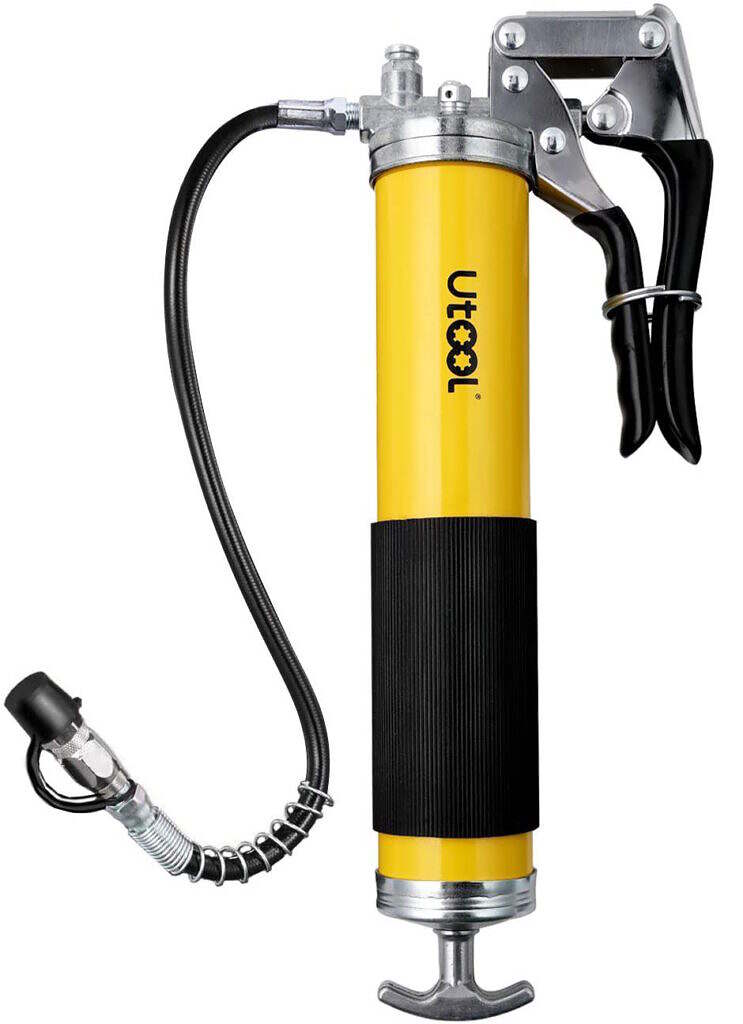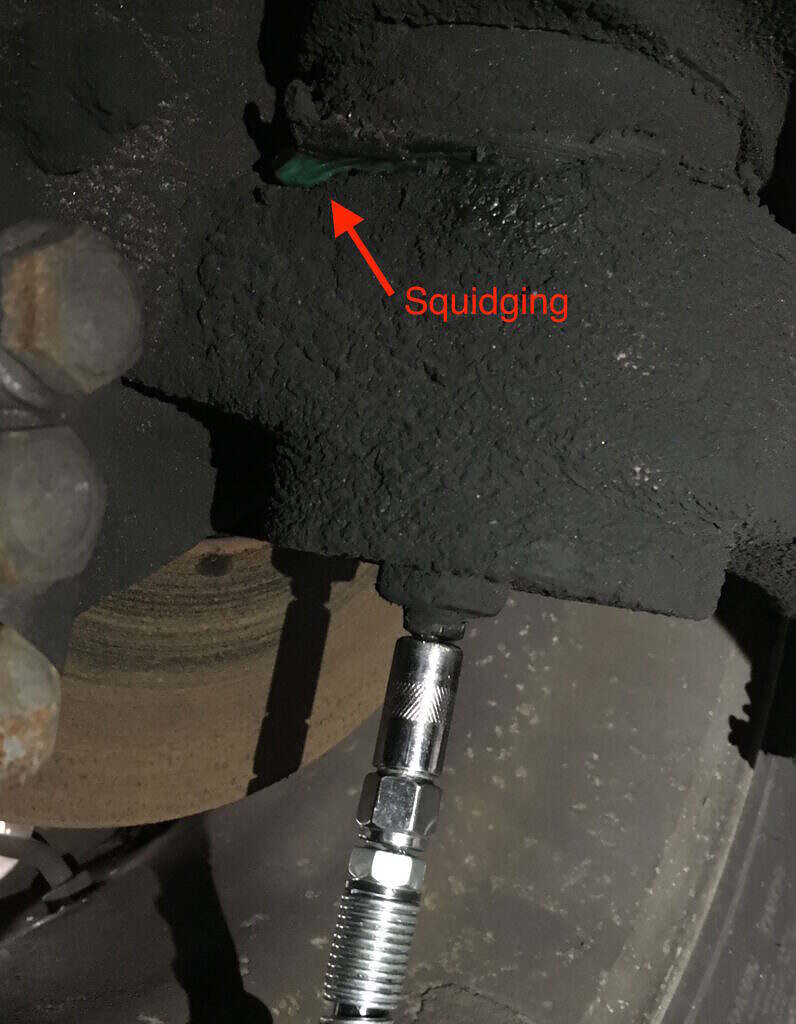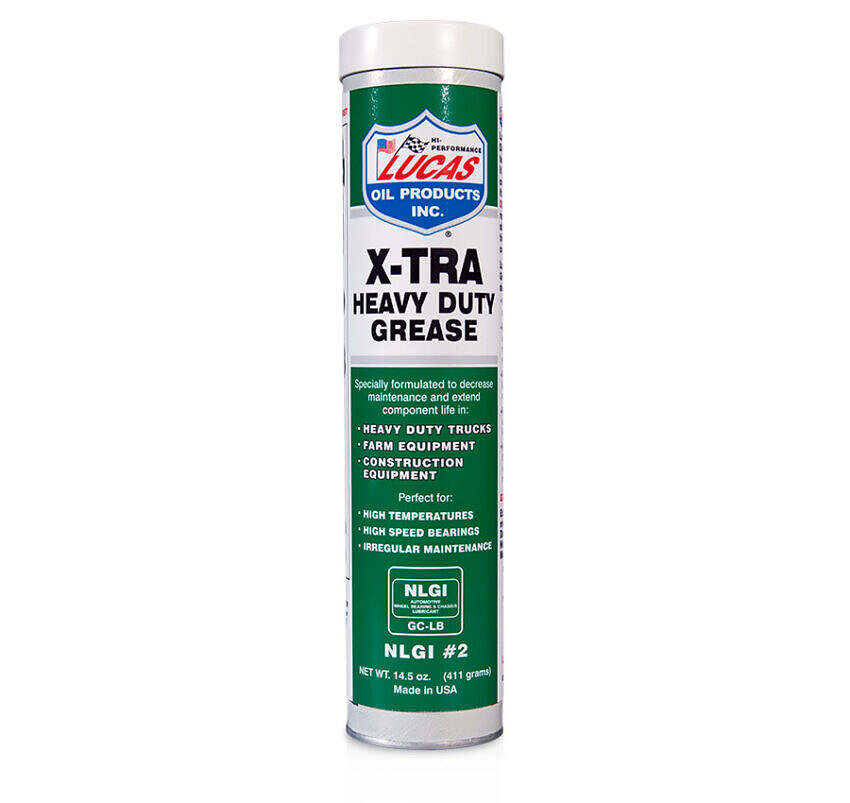
Another fun part of owning a medium or heavy duty truck, or any piece of heavy equipment, is you need to periodically grease parts of it that are prone to wear. This is done using a grease gun, which is loaded with a tube of grease. This, by the way, is one of the most foul-tempered, disagreeable tools I’ve yet had the displeasure to wrestle with. I’m not sure if it was just because it was new or if I was doing something wrong, but even after reading the manual, I found it incredibly difficult to load the grease. The large spring that presses the seal through the tube twanged back several times and knocked me in the knuckles.

The grease is applied through what are called grease zerks, which are basically tiny one-way valves. My truck has 15 zerks (at least that I’ve been able to locate so far.) Finding them is a matter of identifying joints where two pieces of metal rub against each other and looking over, under and around it for a zerk. This is made more difficult because they are often caked in dirt and old grease. Once you clean the zerk so as not to introduce dirt into the joint, the business end of the grease gun fits over it and you can begin pumping in grease. You basically pump the handle until grease starts squidging (yes, squidging. I just made it up) out the joint. Most of my zerks took between 5 and 8 pumps, though the king pins, which are what the front wheels pivot on when steering, have upper and lower zerks and these took 10-15 pumps each. Once I did a few, I could feel the resistance build in the handle as I pumped. I would then pause for a few seconds until the fresh grease came out of the joint. Then I would give it another pump or two just to make sure the new grease displaced the old grease and any air pockets. I used Lucas Heavy Duty grease, which is green, making it easy to distinguish from the old grease.

Once you’ve added grease, now you have to wrestle the hose fitting off the zerk. This is made more difficult because it’s now under pressure. To remove it’s death grip on the zerk you have to unscrew the end a bit, which is conveniently covered in grease. Once I got the hang of it it wasn’t too difficult, but you have to be careful because it’s common to break the zerks when removing the fitting. Some clever company makes a quick-release fitting, but it costs more than the entire grease gun. How often you have to grease is dependent on how many miles you drive (as well as weight and temperature, I assume.) My truck hadn’t been greased since it’s last service in 2018, so it likely took more grease than it will going forward. The general rule is to do it when you change your oil. If you find you’re adding more grease to the same fitting over time, it probably means that joint is worn out.
These are where the grease zerks were on my truck:
- Steering shaft U-joints: 2, upper and lower
- Steering drag link: 1
- Steering link: 2, left and right
- King pins: 4, upper and lower, left and right wheels
- Drive shaft U-joints: 6
Grease points can also be found on some suspension components, though my front shocks are sealed and the rear suspension uses air bags. The leaf springs on my truck don’t have any zerks.
Most passenger cars no longer have grease zerks as all those components are sealed. I assume trucks and heavy equipment still use them given they are so much heavier.
